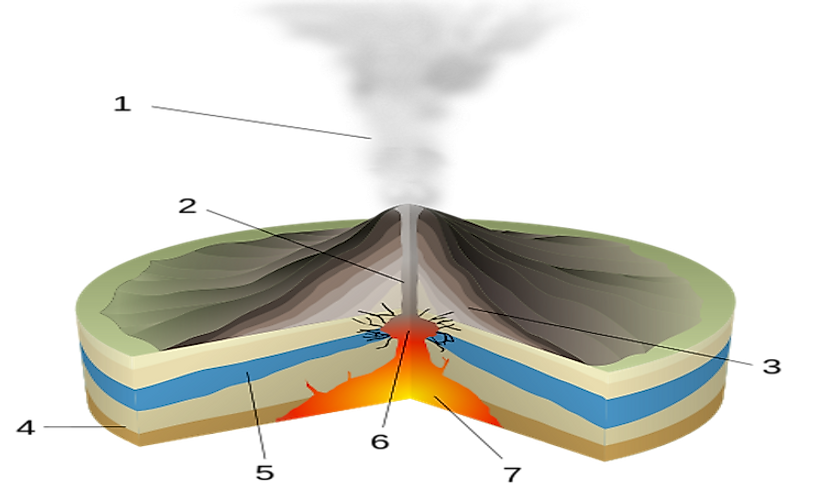What Is A Phreatic Eruption?

What Is A Phreatic Eruption?
When magma heats ground or surface water it results in an explosion of water, steam, rock, and ash, called a phreatic eruption which is also known as a steam-blast eruption, phreatic explosion or ultravulcanian eruption. Phreatic eruptions occur every time water and magma come into close proximity. When magma approaches aquifer in this case underground water, the result is an indentation of large volumes of country rock thus producing rootless volcanic craters also known as maars. Phreatic eruptions can also occur and melt the peaks of glaciers or lakes. When lava flows over wet sediments, it can create small-scale phreatic explosions.
Characteristics Of Phreatic Eruptions
The magma have extreme temperatures ranging between 500 and 1170 degrees Celsius resulting in rapid evaporation to steam which causes the explosion of water, rock, ash, steam, and volcanic bombs. In 1980, a major phreatic eruption which resulted to huge steam explosions took place on Mount St.Helens. Phreatic eruptions usually include rock fragments and steam since the inclusion of lava is rare and the fragments have a temperature that ranges from cold to extremely hot. If the eruption involves molten magma, the process is known as a phreaomagmatic eruption.
Phreatic Eruptions And Their Aftermath
Phreatic eruptions can form expansive low relief craters called maars. The explosions can coincide with the emission of hydrogen sulfide and carbon dioxide gasses, and if the explosion releases sufficient concentration of carbon dioxide, it can lead to asphyxiation whereas hydrogen sulfide produced in large scale is extremely toxic.
In 1979, the phreatic eruption that occurred on Java Island claimed 140 lives most of whom died from being exposed to poisonous gasses. Phreatic explosions are classified as volcanic eruptions since the explosion has the potential of bringing crude components to the surface.
In 1883, an eruption that took place in Krakatoa annihilated most of the Island and was believed to have created the loudest sound ever recorded in history or any other phreatic event. The Kilauea region of Hawaii holds the record for the longest phreatic explosions. A phreatic eruption that took place in 1924, detonated rocks weighing around eight tons to a distance of more than kilometer.
Other Examples Of Phreatic Eruptions
Other examples of phreatic eruptions include the Surtsey eruption between 1963 and 1965 the Taal Volcano eruption of 1965, the Mount Tarumae eruption of 1982, the Mayon Volcanic eruption of 2013 which resulted to a sudden phreatic eruption that lasted only 73 seconds and the 2014 eruption that took place on Mount Ontake.
The Dangers Of Phreatic Eruptions
There are three main types of dangers involved with phreatic eruptions, and they include;
Toxic gasses release, such as carbon dioxide and hydrogen sulfide. The emission of gasses as a result of phreatic eruptions has caused a significant amount of deaths throughout blast zones.
Base surges, which are characterized by fast moving gas, liquids or particles, are extremely dangerous and destructive. Base surges are formed by the degradation of ballistic ejecta and the entrapment of atmospheric gas. The deposits of base surge formed through phreatic eruptions are characterized by lithic grains and structures such as dune forms and cross laminations. Falling particles, such as rocks can be of great danger to the people living around the blast zone.











